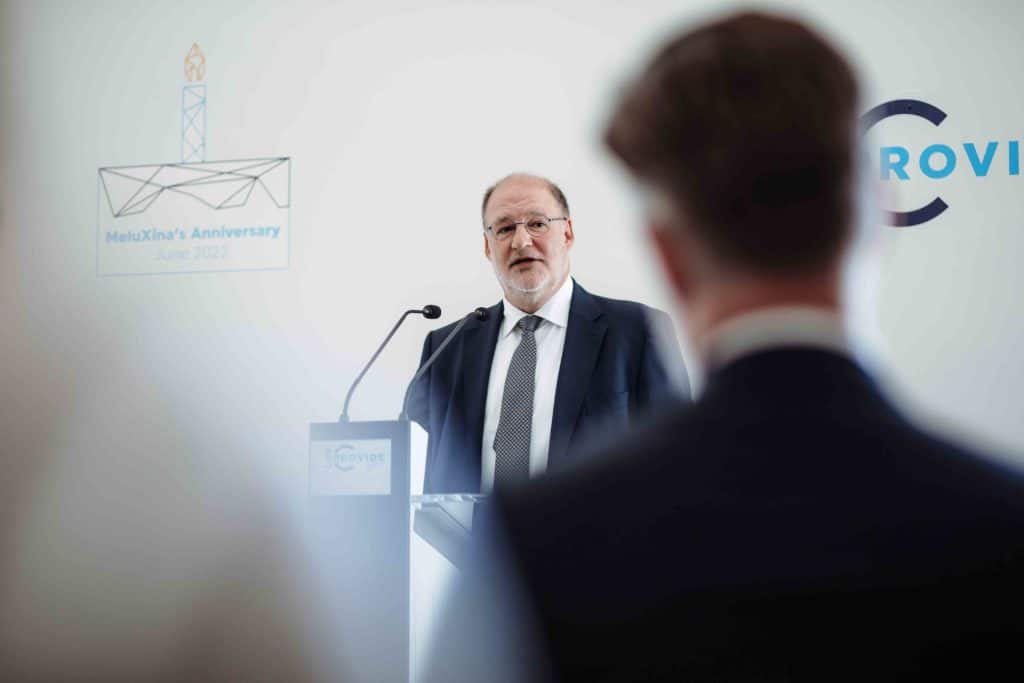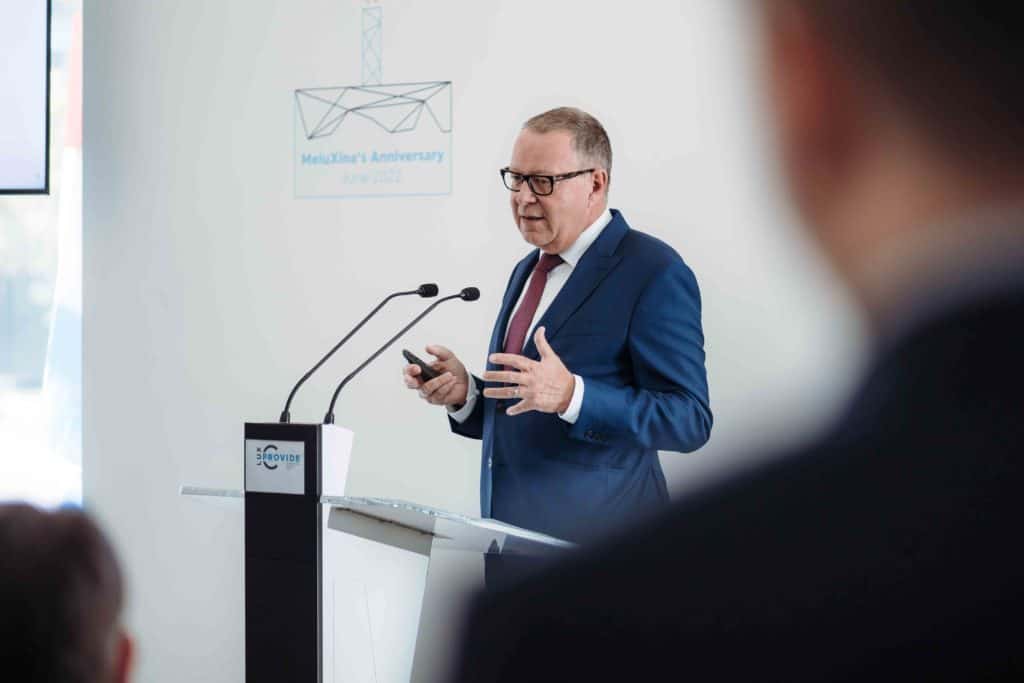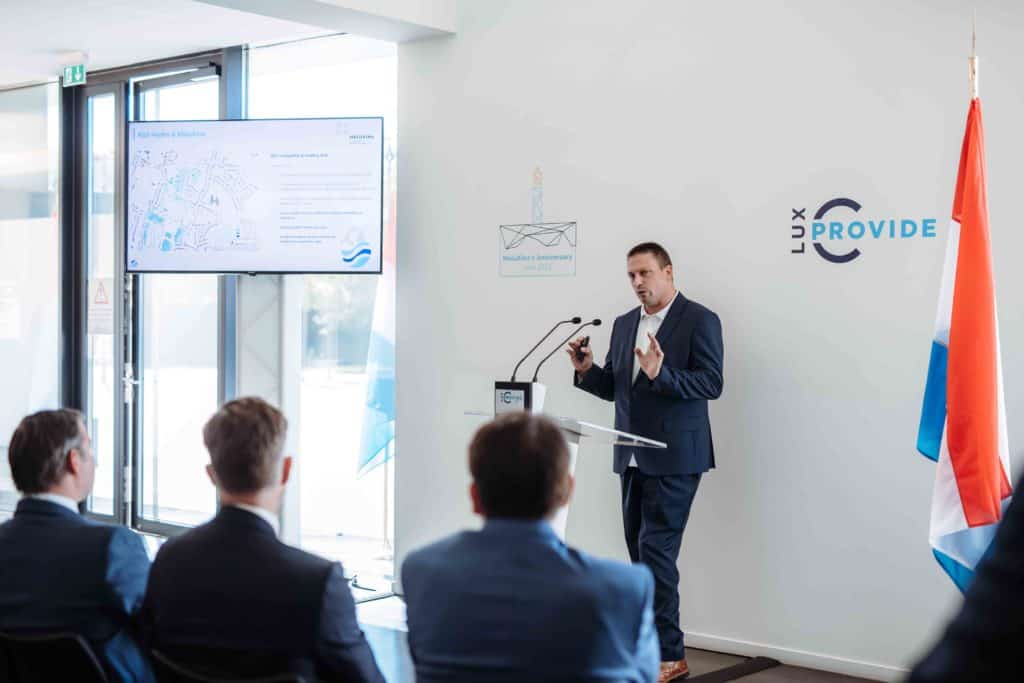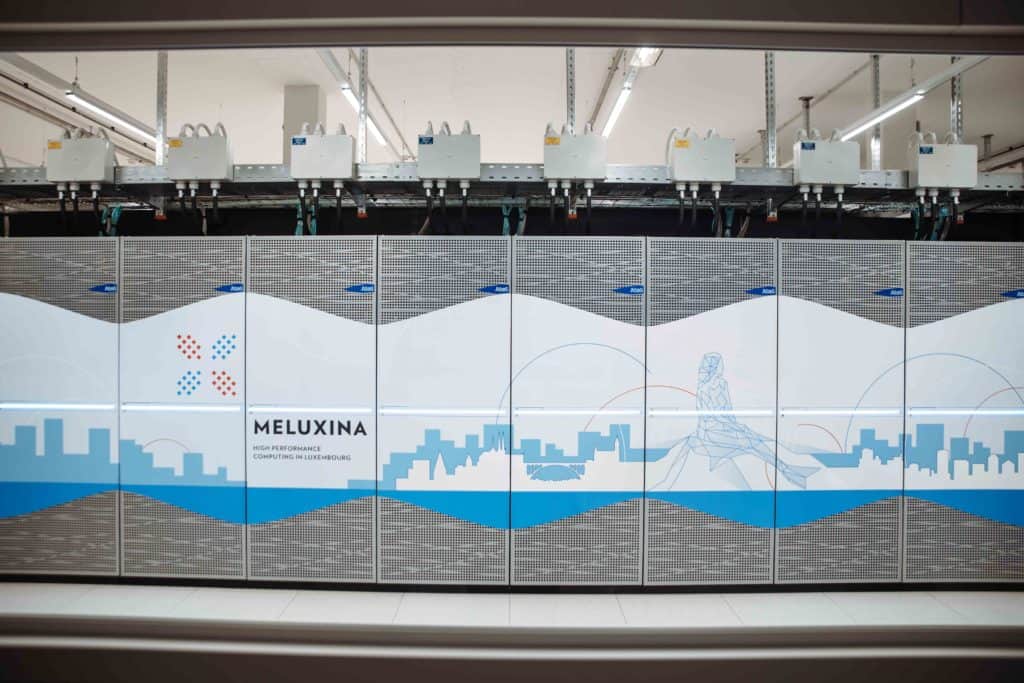The Luxembourg supercomputer hosted at LuxConnect (Bissen) was visited on 14 June by HRH the Hereditary Grand Duke, Minister of Economy Franz Fayot and Mayor David Viaggi.
In June 2021, the MeluXina high-performance computer entered into operation. With its maximum peak computing power of 18 petaflops (18 million billion computing operations per second), it ranks among the top 50 HPCs in the world.
Powered 100% by green energy, it ranks among the top 15 systems in terms of energy efficiency.
Housed in the LuxConnect data center in Bissen, operated by LuxProvide (23 employees), the National Competence Center for High Performance Computing is co-managed by Luxinnovation, the University of Luxembourg and LuxProvide.
The Luxembourg supercomputer is used for research and for innovation projects in the fields of meteorology (simulation, climate analysis), automotive, aeronautics, energy, medicine and finance.
On 14 June, the Luxembourg supercomputer received a visit from HRH the Hereditary Grand Duke, Minister of Economy Franz Fayot and Mayor David Viaggi to celebrate its first anniversary.
“The race for high-performance computing is at the heart of international competition in all areas of research and innovation. The challenges related to supercomputing are strategic for a country like Luxembourg,” explained Franz Fayot. “Thanks to MeluXina and the National Competence Center for High Performance Computing, companies and research organisations can now access a wide range of services to set up high value-added HPC projects.”
SAR le Grand-Duc héritier & @FranzFayot ont visité les installations de #MeluXina, le #superordinateur 🇱🇺, à l’occasion de son 1er #anniversaire🕯️. MeluXina est utilisé par la recherche & par les entreprises pour leurs projets d’innovation👉🏻 https://t.co/BYxgmjjLtm pic.twitter.com/qJI42Mec9S
— MinEconomyLU 🇱🇺 (@MinEcoLux) June 14, 2022
Computing power as a service
MeluXina provides computing power as a service to industries, SMEs and startups. 200 companies from 15 different economic sectors are lined up to use it. More than 60 projects have already been carried out.
RSS-Hydro, a startup specialising in data processing for flood forecasting, and the satellite operator SES were also on hand. Specialising in the research and development of remote sensing technologies, including drones and satellites, and computer simulations of water-related hazards, RSS-Hydro uses MeluXina to optimise very high resolution flood simulations
The startup offers scientific flood risk maps at the building scale, using the latest science combined with the latest advances in computer modeling and remote sensing technology innovation.
“With MeluXina, we are increasing the speed and computational performance of our flood simulations by a factor of 10, which significantly enhances the effectiveness and efficiency of our operations,” said Guy Schumann, RSS-Hydro CEO.
For its part, Luxembourg satellite operator SES is optimising the performance of its satellites with MeluXina on behalf of its customers and end-users in the telecommunications, Internet services, enterprise and energy, ship and aircraft connectivity, and government sectors.
“Our new systems are based on software that uses complex algorithms. SES runs hundreds of tests that require high computational performance. With MeluXina, we can do this more efficiently and overcome the limitations of conventional computing capabilities,” said Ferdinand Kayser, strategic advisor to the SES CEO.












